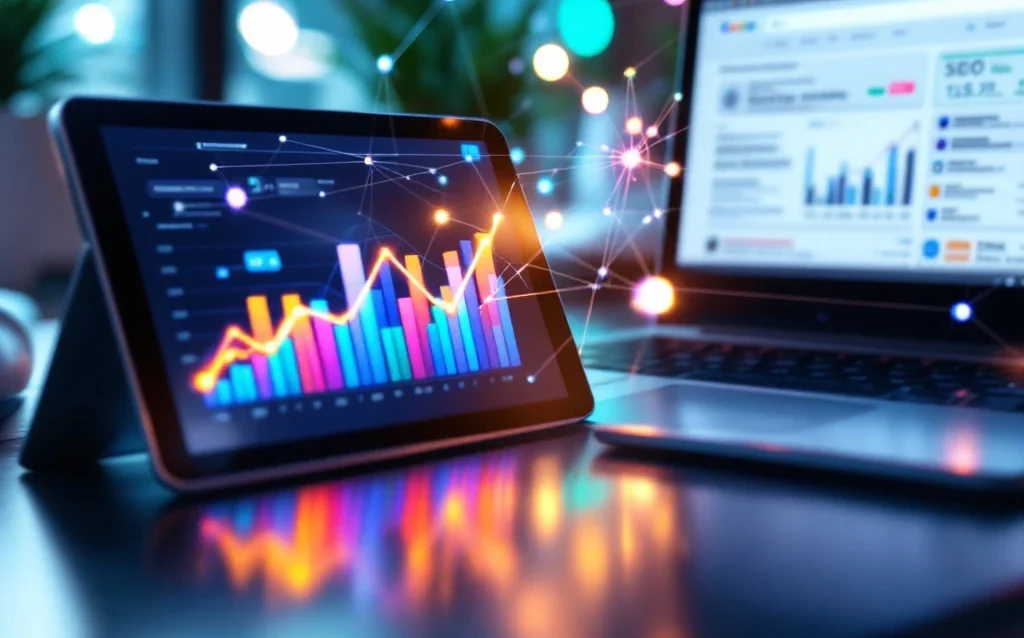Social mention tracking involves monitoring conversations about your brand across social media platforms, forums, and websites to understand public perception and engage with your audience. This monitoring helps you respond to customer feedback, manage your reputation, and identify opportunities for growth. Whether mentions include your brand name directly or reference your products indirectly, tracking them provides valuable insights into how people discuss your business online.
What are social mentions and why should you track them?
Social mentions are any time someone references your brand, products, or services on social media platforms, review sites, forums, or other online spaces. They include direct mentions where your brand name is explicitly stated, indirect mentions where your products are discussed without naming your company, and hashtag mentions that use branded hashtags or industry-related tags.
Tracking social mentions helps you understand your brand reputation in real-time. When customers share experiences or opinions about your business, these conversations shape how others perceive your brand. Monitoring these discussions allows you to respond quickly to both positive feedback and potential issues before they escalate.
Social mentions also provide valuable customer insights. You can discover what people love about your products, identify common complaints, and understand how your audience talks about your industry. This information helps improve your products, refine your messaging, and create content that resonates with your target market.
For business growth, social mentions can reveal new opportunities. You might find potential customers asking for recommendations, discover partnership possibilities, or identify trending topics relevant to your industry. These insights help you make informed decisions about marketing strategies and business development.
Which social media platforms should you monitor for mentions?
You should monitor platforms where your target audience is most active, typically including Twitter, Facebook, Instagram, LinkedIn, TikTok, Reddit, and YouTube. Each platform serves different purposes and demographics, so your monitoring strategy should reflect where your customers spend their time and discuss topics related to your industry.
Twitter remains crucial for real-time conversations and customer service interactions. People often share immediate reactions, complaints, or praise on Twitter, making it essential for quick response opportunities. Facebook provides longer-form discussions and community conversations, while Instagram focuses on visual content and lifestyle-related mentions.
LinkedIn is vital for B2B companies, as professional discussions about industry trends and business solutions frequently happen there. TikTok has become important for brands targeting younger demographics, with viral content potentially creating massive mention spikes.
Reddit offers authentic community discussions where people seek genuine recommendations and share honest opinions. YouTube comments and video content can provide detailed feedback about your products or industry. Forums and review sites like Trustpilot or industry-specific platforms also deserve attention.
Prioritise platforms based on your audience demographics and business type. B2B companies might focus on LinkedIn and Twitter, while consumer brands might emphasise Instagram, TikTok, and Facebook. Start with 3-4 key platforms rather than trying to monitor everything at once.
What tools can you use to track social mentions effectively?
Effective social mention tracking requires both free and paid tools, with your choice depending on your budget, monitoring needs, and desired features. Google Alerts provides basic free monitoring for web mentions, while comprehensive platforms like Hootsuite, Sprout Social, Brand24, and Mention offer advanced features for serious social listening.
Google Alerts works well for simple brand name monitoring across websites and news sources, but it misses many social media conversations and provides limited analytics. It’s suitable for small businesses starting with basic monitoring needs.
Hootsuite includes social listening features within its broader social media management platform, making it convenient if you already use it for posting and scheduling. Sprout Social offers robust analytics and sentiment analysis, helping you understand not just what people say but how they feel about your brand.
Brand24 specialises in social listening with real-time monitoring, influence scoring, and detailed analytics. Mention provides comprehensive coverage across social media, news, blogs, and forums with customizable alerts and team collaboration features.
When selecting tools, consider monitoring coverage (which platforms and sources they track), real-time alerts, sentiment analysis capabilities, reporting features, team collaboration options, and integration with your existing marketing tools. Free tools work for basic monitoring, but paid platforms provide deeper insights and better coverage for serious brand monitoring efforts.
How do you set up automated social mention tracking?
Setting up automated tracking involves defining your keywords, configuring monitoring parameters, and establishing notification systems. Start by creating a comprehensive list of terms to monitor, including your brand name, product names, key personnel, competitors, and relevant industry keywords.
Configure your chosen tool with specific search parameters. Include exact brand name matches, common misspellings, abbreviations, and variations people might use. Add relevant hashtags, competitor names for competitive analysis, and industry terms that might generate leads or insights.
Set up Boolean search queries to refine your results. Use quotation marks for exact phrases, OR operators for alternative terms, and negative keywords to exclude irrelevant mentions. For example: “YourBrand” OR “Your Brand” OR #YourBrandHashtag NOT jobs.
Establish alert frequencies based on your monitoring needs and response capacity. Real-time alerts work well for customer service issues, while daily or weekly summaries might suit general brand monitoring. Configure different alert levels for various types of mentions – immediate alerts for negative sentiment or high-influence mentions, and regular summaries for general monitoring.
Create monitoring workflows that assign mentions to appropriate team members. Customer service issues should route to support staff, while PR opportunities might go to marketing teams. Document response protocols so everyone knows how to handle different types of mentions consistently.
What should you do when you find social mentions of your brand?
When you discover social mentions, your response strategy should depend on the mention type, sentiment, and context. Positive mentions deserve acknowledgment and appreciation, while negative mentions require careful assessment and appropriate response to prevent reputation damage.
For positive mentions, engage authentically by thanking the person, sharing their content (with permission), or offering additional value. These interactions strengthen relationships and encourage more positive word-of-mouth marketing. Consider reaching out to satisfied customers for testimonials or case studies.
Negative mentions require more careful handling. Assess whether the complaint is legitimate and warrants a public response or private conversation. Respond quickly to show you’re attentive, acknowledge the concern, and offer to resolve the issue privately when appropriate. Avoid defensive responses or arguments in public forums.
Neutral mentions, such as questions about your industry or product comparisons, present opportunities to provide helpful information and demonstrate expertise. Engage genuinely without being overly promotional, focusing on adding value to the conversation.
For crisis situations or viral negative mentions, implement your crisis management protocol immediately. This might involve escalating to senior management, preparing official statements, and coordinating responses across all channels. Document all interactions for future reference and learning.
Transform mentions into business opportunities by identifying potential customers asking for recommendations, journalists seeking expert opinions, or influencers discussing relevant topics. These conversations can lead to sales, media coverage, or partnership opportunities when handled professionally.
How do you measure the impact of your social mention tracking efforts?
Measuring social mention tracking impact requires monitoring key metrics including mention volume, sentiment analysis, reach and impressions, engagement rates, and conversions from social interactions. These metrics help you understand both the quantity and quality of conversations about your brand.
Track mention volume trends over time to identify patterns, campaign impacts, or emerging issues. Sudden spikes might indicate viral content, PR crises, or successful marketing campaigns. Compare your mention volume to competitors to understand your share of voice in your industry.
Sentiment analysis reveals how people feel about your brand, with most tools categorising mentions as positive, negative, or neutral. Monitor sentiment trends to identify reputation changes and measure the impact of your response efforts. A shift from negative to neutral or positive sentiment indicates effective reputation management.
Measure reach and impressions to understand how many people potentially saw mentions of your brand. High-influence mentions from accounts with large followings create more impact than those from smaller accounts. Track which platforms and types of mentions generate the most visibility.
Monitor engagement rates on your responses to mentions. High engagement suggests your responses resonate with audiences and contribute to positive brand perception. Track response times to ensure you’re meeting customer expectations for social media interactions.
Most importantly, track conversions and business impact from social mentions. Use UTM parameters and conversion tracking to identify leads, sales, or other valuable actions that result from social listening efforts. This data helps justify your social monitoring investment and refine your strategy for better results.
Create regular reports that combine these metrics with business context, showing how social mention tracking contributes to broader marketing and business objectives. This reporting helps stakeholders understand the value of social listening and supports continued investment in monitoring efforts.






